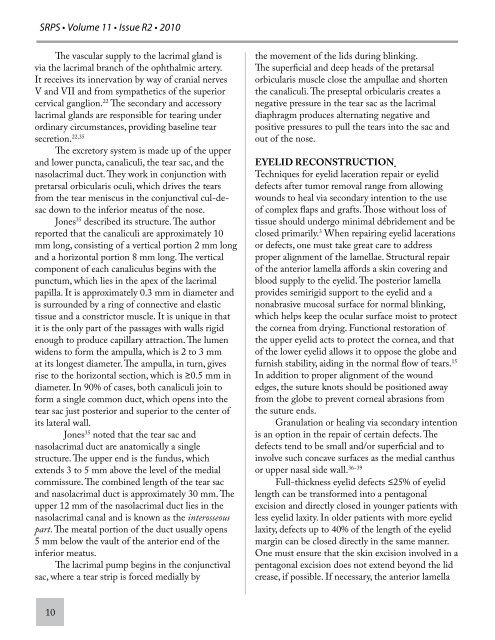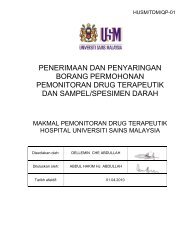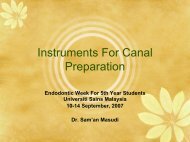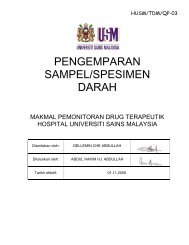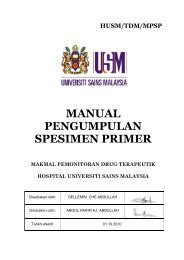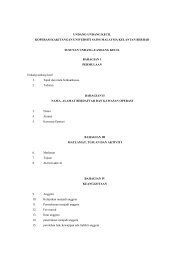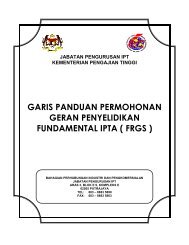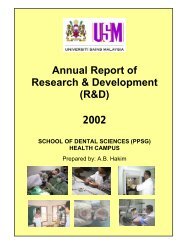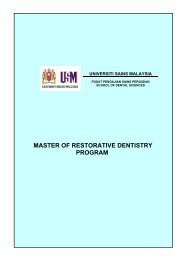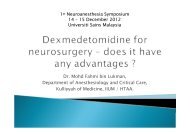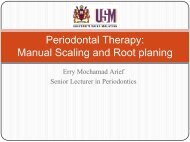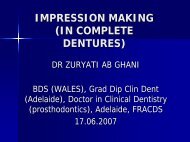Vol 11-R2- Eyelid
Vol 11-R2- Eyelid
Vol 11-R2- Eyelid
Create successful ePaper yourself
Turn your PDF publications into a flip-book with our unique Google optimized e-Paper software.
SRPS • <strong>Vol</strong>ume <strong>11</strong> • Issue <strong>R2</strong> • 2010<br />
The vascular supply to the lacrimal gland is<br />
via the lacrimal branch of the ophthalmic artery.<br />
It receives its innervation by way of cranial nerves<br />
V and VII and from sympathetics of the superior<br />
cervical ganglion. 22 The secondary and accessory<br />
lacrimal glands are responsible for tearing under<br />
ordinary circumstances, providing baseline tear<br />
secretion. 22,35<br />
The excretory system is made up of the upper<br />
and lower puncta, canaliculi, the tear sac, and the<br />
nasolacrimal duct. They work in conjunction with<br />
pretarsal orbicularis oculi, which drives the tears<br />
from the tear meniscus in the conjunctival cul-desac<br />
down to the inferior meatus of the nose.<br />
Jones 35 described its structure. The author<br />
reported that the canaliculi are approximately 10<br />
mm long, consisting of a vertical portion 2 mm long<br />
and a horizontal portion 8 mm long. The vertical<br />
component of each canaliculus begins with the<br />
punctum, which lies in the apex of the lacrimal<br />
papilla. It is approximately 0.3 mm in diameter and<br />
is surrounded by a ring of connective and elastic<br />
tissue and a constrictor muscle. It is unique in that<br />
it is the only part of the passages with walls rigid<br />
enough to produce capillary attraction. The lumen<br />
widens to form the ampulla, which is 2 to 3 mm<br />
at its longest diameter. The ampulla, in turn, gives<br />
rise to the horizontal section, which is ≥0.5 mm in<br />
diameter. In 90% of cases, both canaliculi join to<br />
form a single common duct, which opens into the<br />
tear sac just posterior and superior to the center of<br />
its lateral wall.<br />
Jones 35 noted that the tear sac and<br />
nasolacrimal duct are anatomically a single<br />
structure. The upper end is the fundus, which<br />
extends 3 to 5 mm above the level of the medial<br />
commissure. The combined length of the tear sac<br />
and nasolacrimal duct is approximately 30 mm. The<br />
upper 12 mm of the nasolacrimal duct lies in the<br />
nasolacrimal canal and is known as the interosseous<br />
part. The meatal portion of the duct usually opens<br />
5 mm below the vault of the anterior end of the<br />
inferior meatus.<br />
The lacrimal pump begins in the conjunctival<br />
sac, where a tear strip is forced medially by<br />
10<br />
the movement of the lids during blinking.<br />
The superficial and deep heads of the pretarsal<br />
orbicularis muscle close the ampullae and shorten<br />
the canaliculi. The preseptal orbicularis creates a<br />
negative pressure in the tear sac as the lacrimal<br />
diaphragm produces alternating negative and<br />
positive pressures to pull the tears into the sac and<br />
out of the nose.<br />
EYELID RECONSTRUCTION<br />
Techniques for eyelid laceration repair or eyelid<br />
defects after tumor removal range from allowing<br />
wounds to heal via secondary intention to the use<br />
of complex flaps and grafts. Those without loss of<br />
tissue should undergo minimal débridement and be<br />
closed primarily. 3 When repairing eyelid lacerations<br />
or defects, one must take great care to address<br />
proper alignment of the lamellae. Structural repair<br />
of the anterior lamella affords a skin covering and<br />
blood supply to the eyelid. The posterior lamella<br />
provides semirigid support to the eyelid and a<br />
nonabrasive mucosal surface for normal blinking,<br />
which helps keep the ocular surface moist to protect<br />
the cornea from drying. Functional restoration of<br />
the upper eyelid acts to protect the cornea, and that<br />
of the lower eyelid allows it to oppose the globe and<br />
furnish stability, aiding in the normal flow of tears. 15<br />
In addition to proper alignment of the wound<br />
edges, the suture knots should be positioned away<br />
from the globe to prevent corneal abrasions from<br />
the suture ends.<br />
Granulation or healing via secondary intention<br />
is an option in the repair of certain defects. The<br />
defects tend to be small and/or superficial and to<br />
involve such concave surfaces as the medial canthus<br />
or upper nasal side wall. 36−39<br />
Full-thickness eyelid defects ≤25% of eyelid<br />
length can be transformed into a pentagonal<br />
excision and directly closed in younger patients with<br />
less eyelid laxity. In older patients with more eyelid<br />
laxity, defects up to 40% of the length of the eyelid<br />
margin can be closed directly in the same manner.<br />
One must ensure that the skin excision involved in a<br />
pentagonal excision does not extend beyond the lid<br />
crease, if possible. If necessary, the anterior lamella


